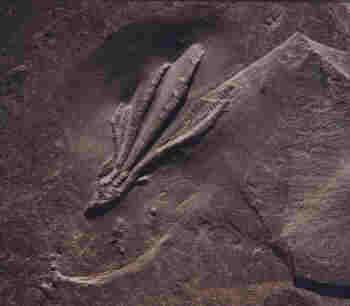
Details of the paper
| Title | Haldenaufsammlungen im Hunsrückschiefer (3-5): Die Grube Karschheck [Collecting from tip heaps in the Hunsrück Slate (3): The Karschheck quarry] |
| Year: | 2005 |
| Language: | German |
| Source: | Fossilien, 22 (3) S. 182-188, (4) S. 214-222, (5) S. 282-289 |
| Keywords: | Hunsrück Slate, Karschheck quarry, mining history, fossils |
| Summary: | The Karschheck quarry proves, that outside the famous Bundenbach-Gemünden area, in slate, where bedding and cleavage are not parallel to each other ("Krappstein"), a relatively abundant and special fauna can be found. Among them there are vertebrates: a remains of a placoderm fish (Tityosteus) and small spines of acanthodians. The robust, mostly spined, crinoids are often not articulated, showing that they were not immediately covered by sediment. The brachiopod Brachyspirifer explanatus is the largest yet found in the Hunsrück Slate. This specimen shows, for the first time in the Hunsrück Slate, the spirally coiled lamellae supporting the lophophore. Among the corals are solitary specimens with prolongations to anchor in the mud and long ribbed ones (Rhipidophyllum), which resemble those of the Middle Devonian. New species for the Hunsrück Slate are the crinoids Orthocrinus simplex, aberrant ones of Acanthocrinus and Ctenocrinus, a pygidium of the trilobite Paracryphaeus and a big paleogastropod. An Orthoceras-shell has tentaculitoids on and around it, which are mostly orientated in lengthdirection. This supposes, that these discussed animals are no cephalopods, but snails. |

[Home] [Book - Life in Devonian] [Contact]
| Homepage last update: 25.04.2024 © ´2024 Südkamp - Exkursionen | wouter(x)suedkamp-exkursionen.de Impressum Datenschutz |
Webmaster: peter.holze(x)hunsnet.de |